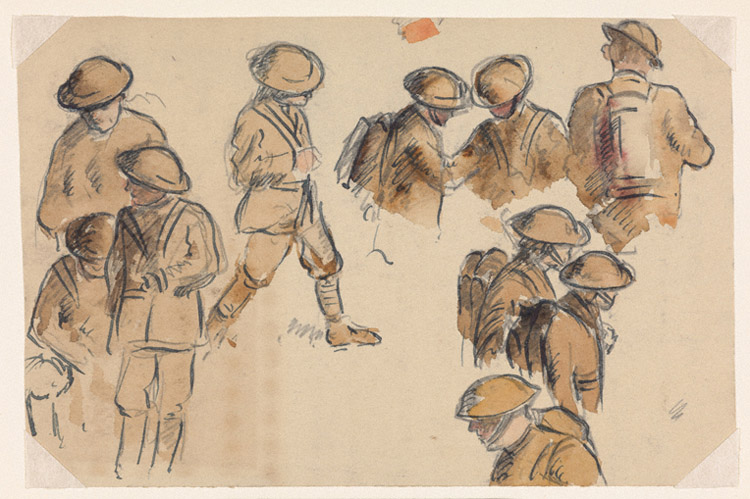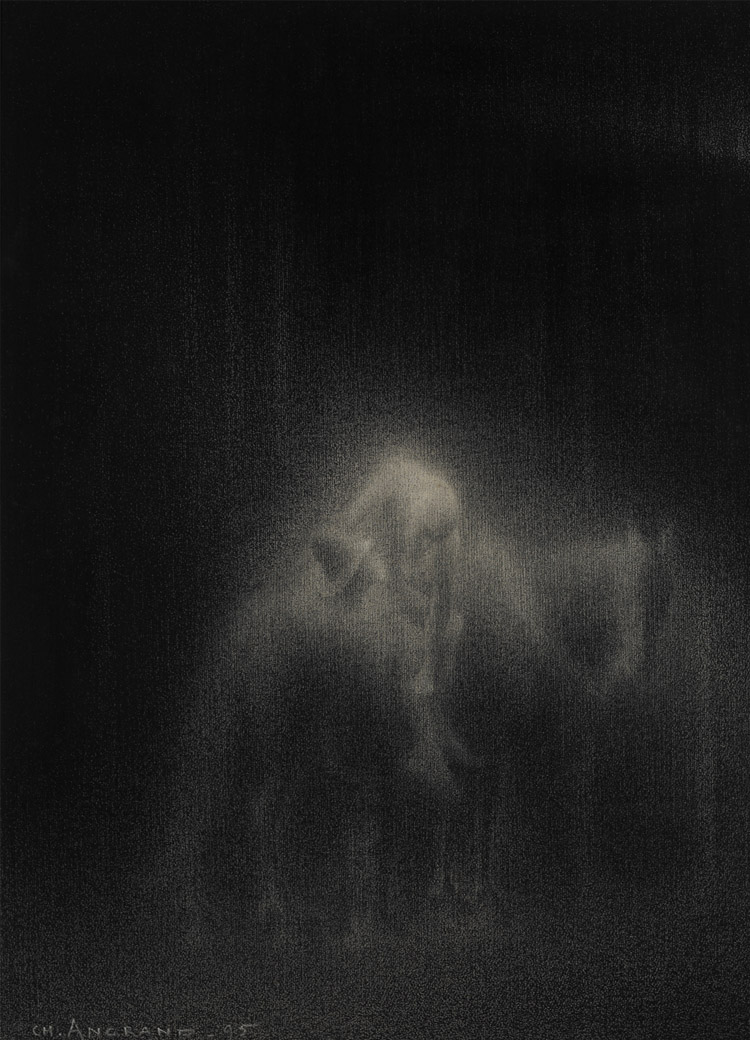
Gifford Beal, Ten soldiers, ca. 1910-ca. 1920. Blue-black ink, graphite pencil, and watercolor on wove paper, 5 x 8 3/8 in. (uneven cut). Gift of Gifford Beal Family, courtesy of Kraushaar Galleries, 2011.
Today and every day, we value our veterans! We’re proud of our growing list of military initiatives and programs, thanks largely to supporters of our major exhibitions like Lockheed Martin. The Phillips is a Blue Star Museum, welcoming military and their family free of charge between Memorial Day and Labor Day, and our renowned music program wouldn’t look the same without the significant role musicians from the Armed Forces have played over the years (watch for a blog post on this soon). Looking toward our future, this winter the Phillips will begin a pilot program with the Community Living Center at the DC Medical Center which will invite participants to connect with each other through conversations in the Phillips galleries and respond by creating their own artworks. Thank you, veterans!


